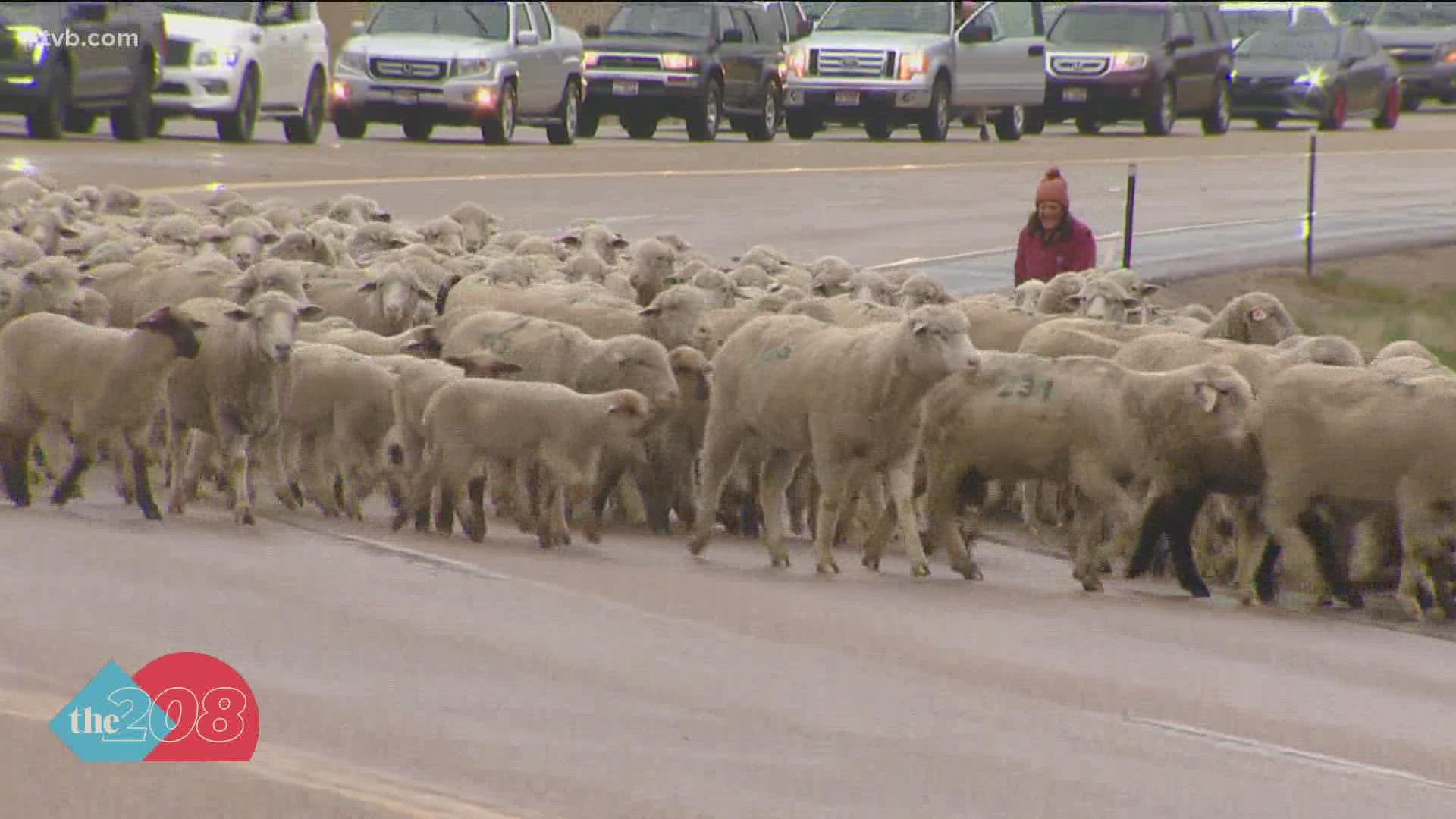EAGLE, Idaho —
This story originally appeared in the Idaho Press.
For a few minutes on Monday morning, near the intersection of Highway 55 and Beacon Light Road, vehicle traffic paused to make way for a mass of wooly sheep carrying out a longstanding tradition.
The 2,500 ewes and lambs are the charges of Frank Shirts, a sheep producer in Wilder, whose crews are leading the sheep to their spring and summer grazing grounds high up in the mountains. Before Idaho was a state, the region's sheep producers, many from the Basque country of Spain and France, led sheep on the same journey to provide their flock with ample water and forage to eat during the spring and summer months.
The Treasure Valley looks a bit different these days. Today’s shepherds help sheep “follow the green,” navigating through alfalfa fields and open space in the Boise foothills to reach grazing grounds in the mountains north of the valley, said Steve Stuebner, spokesperson for Monday's event.
The sheep “are browsers, so they feed on forbs, weeds, shrubs, things like that,” Stuebner said. “And so it’s a great win-win to provide feed for livestock and then at the same time trim the feed and invigorate plants on their way,” he said.
On Monday, howling winds and steady rain met people who arrived to gawk at the flock.
Tim Birch brought his two young daughters, Evelyn and Bryony, to witness the spectacle from the warmth of their car.
“What was your favorite part of seeing the sheep?” Birch asked the girls. “Did you like the baby sheep? The mommy sheep?"
“I liked the … baaaaaah!” Bryony said.
Greg Bernhardt and his wife braved the rain to get a close-up view of the sheep crossing into the green hills east of Horseshoe Bend Road.
“You’d think that this is not a thing people do anymore,” Bernhardt said, referring to the sheep migration. “It’s cool that it still happens, and very close.”
George Everett snapped photos of the sheep as they slowed their march to graze after crossing the road.
“It’s part of the history of the area, you know?” Everett said. “I don’t know how much longer it’s going to be going on. A lot of things are changing of course, in the country, and I think sheep herding is one of them, so catch it while you can.”
The sheep that crossed Highway 55 on Monday will spend about two weeks grazing in the Boise foothills while making their way to Boise National Forest land near Idaho City, settling at an elevation of 6,000-7,000 feet, Stuebner said. In August, the lambs will be shipped off, and the ewes typically return to Treasure Valley in October, Stuebner said.
On Tuesday, the sheep will cross Bogus Basin Road, and will likely be visible from the Corrals Trail, the Hull’s Gulch Trail in Camel’s Back Reserve, and the Three Bears Trailhead in the coming days, Stuebner said.
If someone encounters sheep in the foothills, they should put pets on a leash, according to Stuebner. Cyclists should dismount and walk through sheep before continuing their ride, he said. And if one of the flock's sheep dogs approaches you, it is best to “talk to them and let them know you’re human” while keeping your bike in between you and the dog, Stuebner said.
The spring migration comes as farmers face the prospect of a second year of drought. Historically, in October, workers will herd the sheep back to spend the winter in the Treasure Valley, and give birth to that year’s lambs. But during last year’s dry spell, with so little water available along routes back to the valley, some producers had to truck sheep back, creating an added expense.
Though the majority of the state is in a drought, recent wet weather is offering some hope to farmers, Stuebner said.
“These shots of rain we’ve had lately and snow have really been fantastic,” he said.
The drought is on the minds of all of the region’s farmers, including sheep producers, said Liz Wilder, director of the Idaho Wool Grower’s Association.
“I think we’re really just bracing ourselves at the moment, planning and preparing as much as we can going into the summer months, and hoping for the best,” she said.
Wilder emphasized the important role the sheep play in grazing in the state’s forests and mountains where plant growth could fuel forest fires.
“While they’re consuming what is considered inedible forage for humans in an area that’s really inaccessible for us to cultivate otherwise, they’re also mitigating forest fire fuels through grazing,” Wilder said. “They’re part of this larger ecosystem, this larger economy of scale that affects really all Idahoans across the board … they’re helping prevent a drastic fire season.”
This story originally appeared in the Idaho Press. Read more at IdahoPress.com
Watch more Local News:
See the latest news from around the Treasure Valley and the Gem State in our YouTube playlist:

